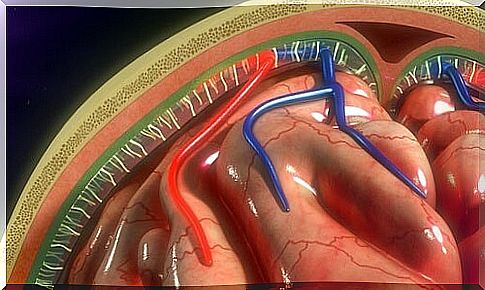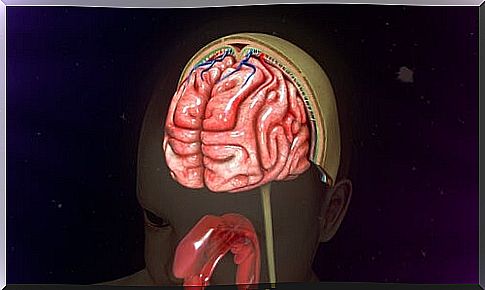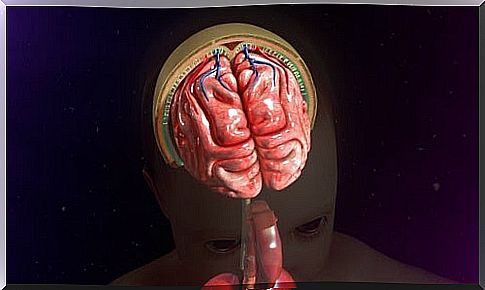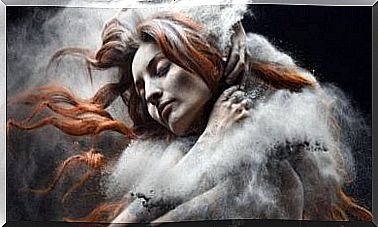Meninges: Characteristics And Functions

The meninges are a trio of membranes that cover and protect the central nervous system, made up of the spinal cord (inside the spinal column) and the brain (inside the skull). They are placed one on top of the other. The most superficial layer is formed by the meninge called the dura mater, underneath is the arachnoid, while the deepest layer is known as the pia mater.
In the space between the arachnoid and the pia mater is the cerebrospinal fluid. This liquid plays a protective role for the brain: it reduces the damage suffered in the event of bumps or falls. Several diseases can reach the meninges, including meningitis (inflammation of the meninges in general).

The meninges: protection of the brain and spinal cord
The problem with nerve tissue is that it is extremely fragile, consisting of weak nerve fibers and specialized cells within very soft tissue. Therefore, it must be hermetically protected against infection. The role of the meninges serves to overcome these two weaknesses: protection against trauma and protection against infection.
Infection of the meninges
The meninges have their own weakness: they are in indirect contact with the outside world. In fact, the ear (through the Eustachian tube) is in contact with the outside air, so an ear can sometimes quickly transmit its germs to the nearby meninges and cause meningitis. This is also the reason why the complication of some meningitis can be hearing problems.
With the lumbar puncture, a CSF analysis (color, number of cells and types of cells found) can be done to determine the origin of the meningitis. The appearance of the fluid can give clues to the type of meningitis.
So-called clear fluid meningitis is often viral in origin, and meningitis with cloudy or purulent fluid is generally bacterial in origin. The fluid is analyzed to identify the germ responsible for the meningitis and, therefore, the most appropriate treatment.
In case of viral meningitis, if the patient does not suffer from immunodeficiency, the body itself will defeat it without external treatment. If it is bacterial meningitis, antibiotics should be taken as soon as possible to avoid possible sequelae. Meningococcal meningitis can also occur , in which a treatment of the patient’s environment must be implemented.
The layers of the meninges
The nervous system housed in bone structures is not in direct contact with the bones, the skull, or the spinal column. The nervous organs are surrounded by a system of membranous layers , the meninges . There are three meninges that from the outside to the inside are: the dura mater, the arachnoid mater, and the pia mater.
The dura
The outermost membrane is the tough and tough dura, made up of connective tissue that protects the underlying layers of the surrounding bones. Ensures a protective start. The dura is visible just above the eye socket.
It contains a large part of the veins that collect the blood used by the brain and return it to the heart. The dura mater covers most of the nervous system with great precision, reaching from the brain to the sacral vertebrae of the spinal cord.
Both the dura mater and the rest of the meninges contain and are connected by different nerve fibers, possessing multiple pressure and pain receptors. In the dura mater itself, the presence of the trigeminal and vagus nerves, as well as the first three spinal nerves, stand out. It is, in short, a layer of the meninges that acts as a “bridge” between the central nervous system and other elements of the body.
Arachnoid
Between the dura and pia is the arachnoid, named for its resemblance to a spider web. It is formed by a homogeneous external lamina, the arachnoid itself, and an internal areolar layer, with large meshes, which constitutes the subarachnoid space, through which the cerebrospinal fluid circulates.
In this space we can also find a series of important cerebral pits and cisterns in which the cerebrospinal fluid accumulates, at the same time allowing its distribution. The function of cerebrospinal fluid is to protect, nourish, lubricate, assist in the electrical function of the central nervous system, among others. In other words, it provides the most suitable means for the survival and function of the main coordination and communication system of the human body.

The pia mater
The innermost of these membranes is the pia mater which attaches itself to the nervous tissue. It is very thin, compact and supports the blood vessels to the central nervous system. It tightly coats the brain, covering the convolutions and descending into the deepest sulci. It extends outward over the cranial nerves and fuses with your epineurium. The cerebral arteries that enter the substance of the brain carry a pia mater sheath with them.
The pia mater forms the choroidal fabric of the roof of the third and fourth ventricles of the brain and fuses with the ependyma to form the choroid plexuses in the lateral, third, and fourth ventricles of the brain.









